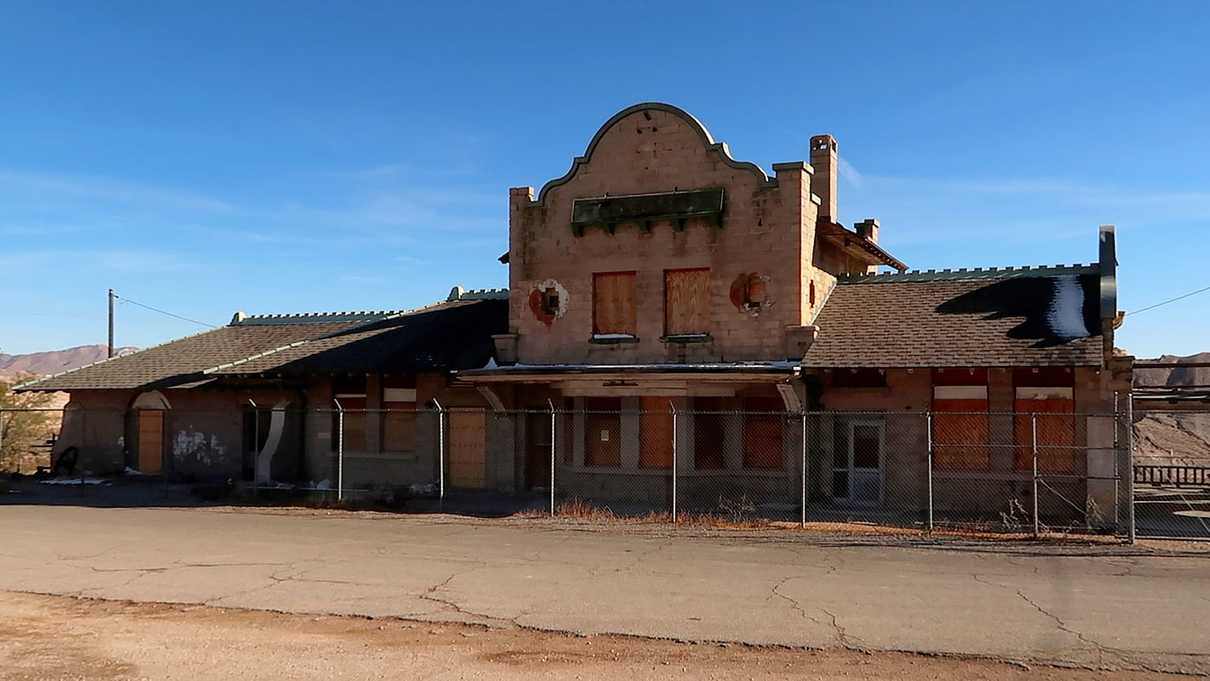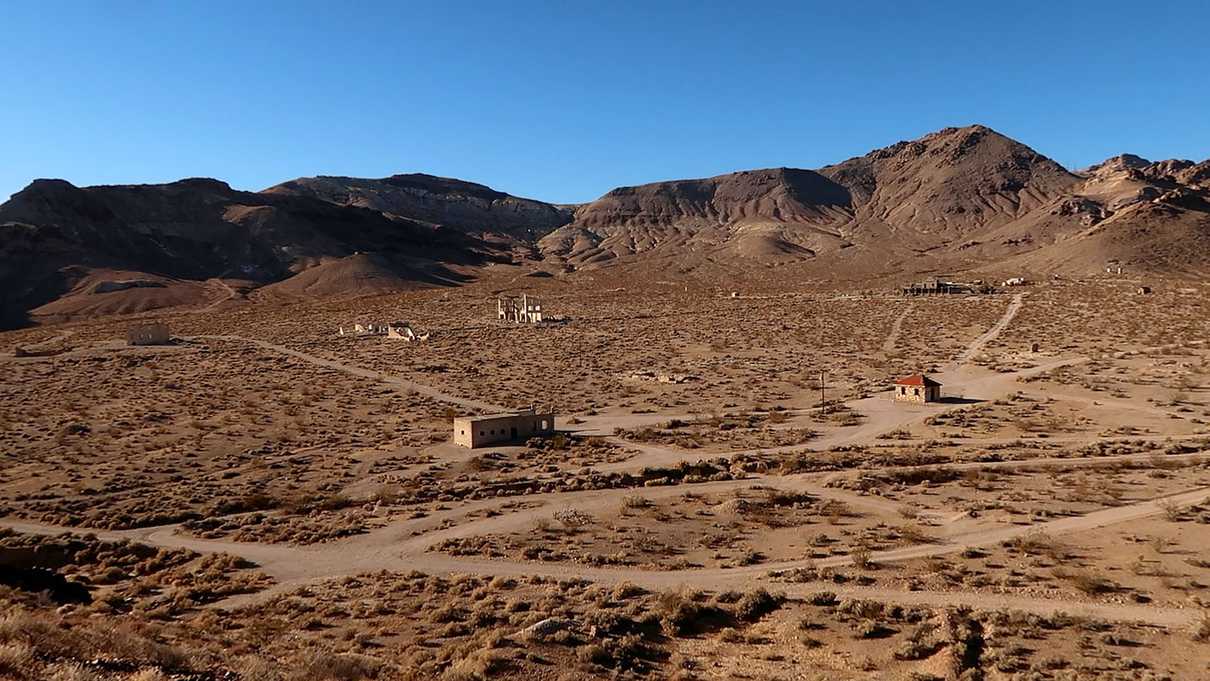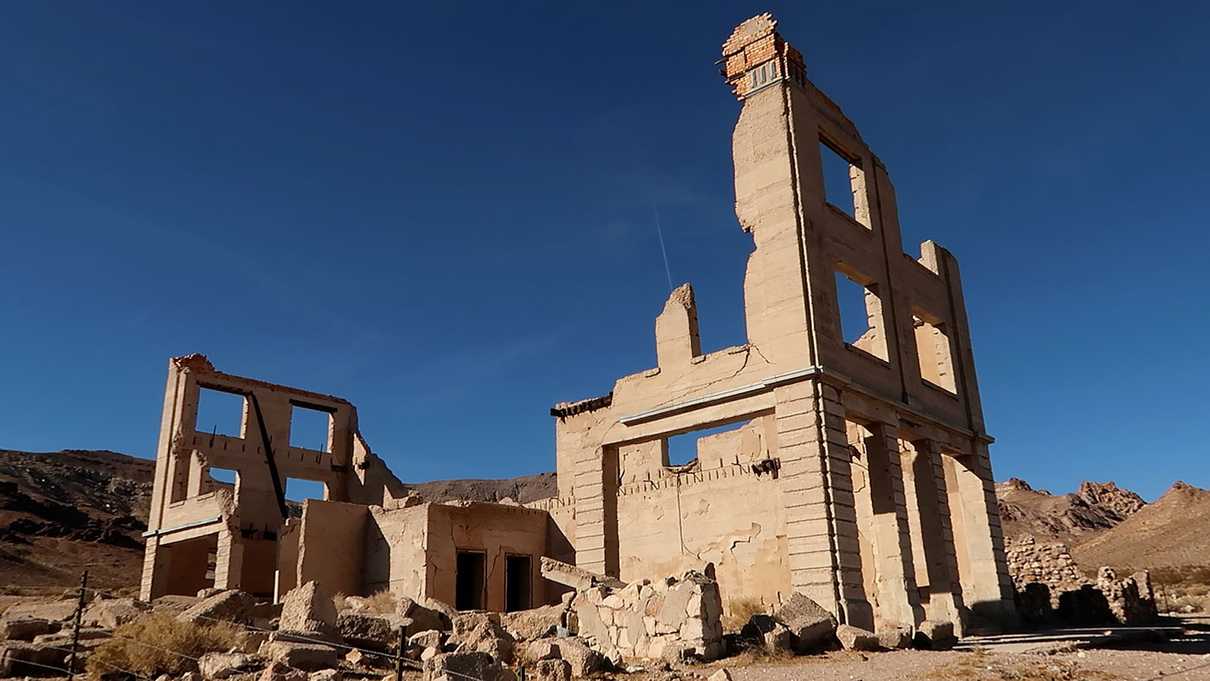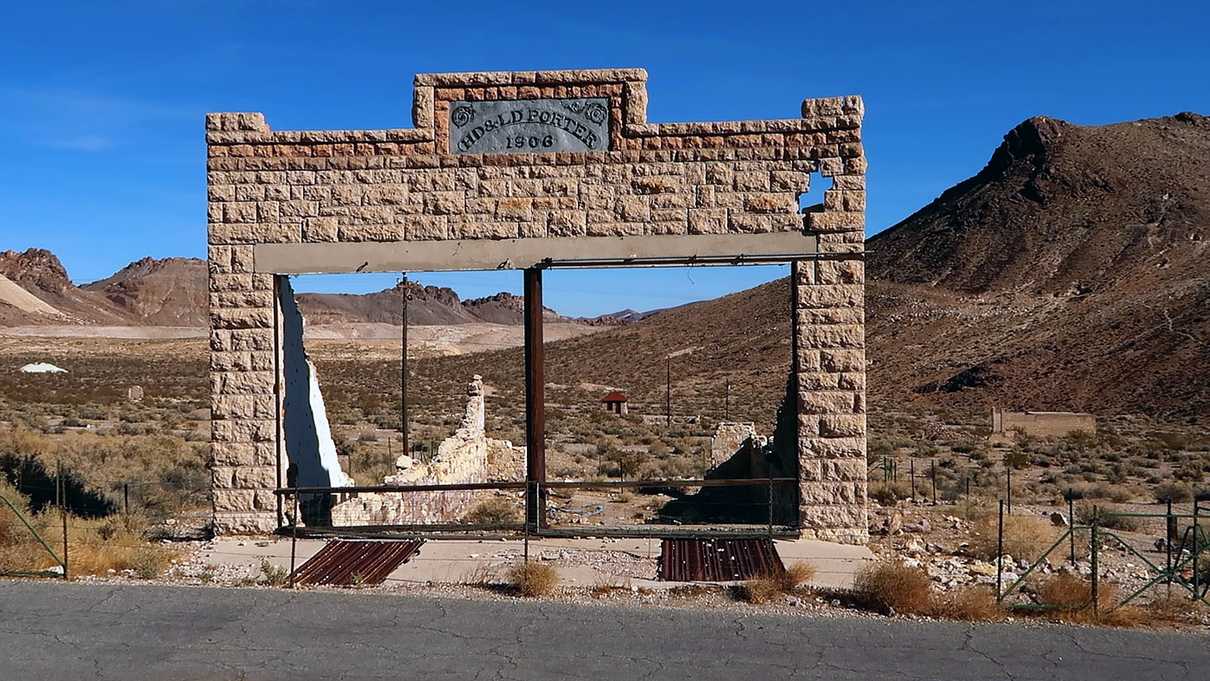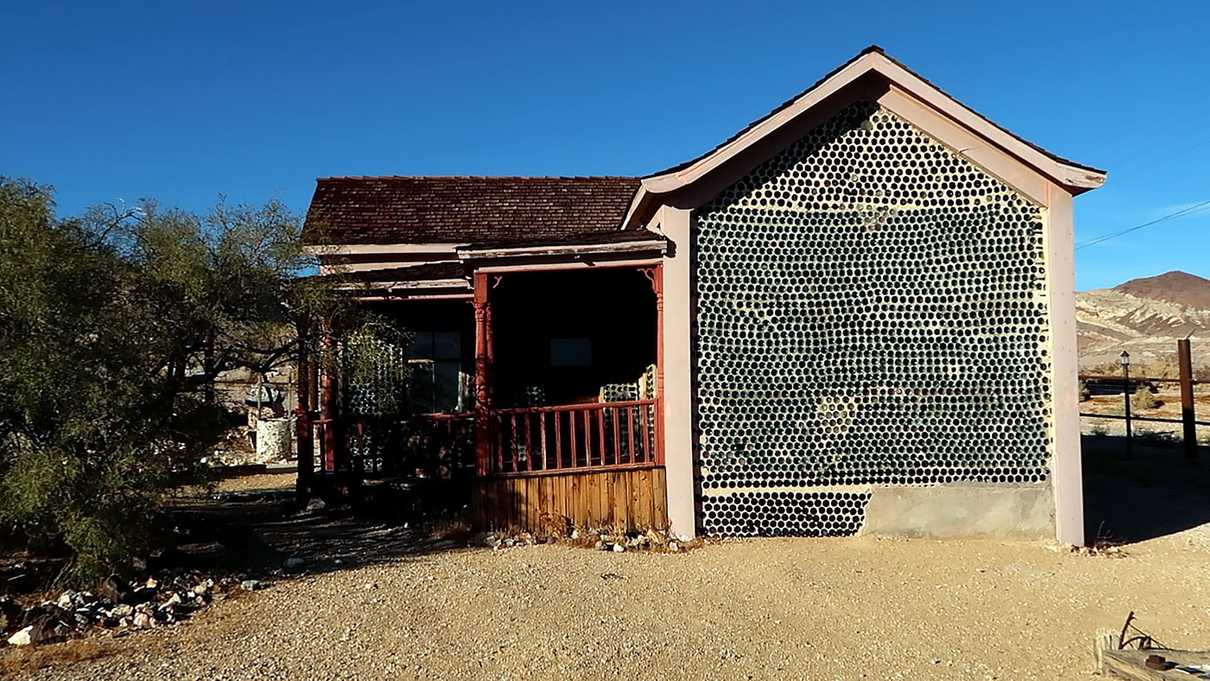Rhyolite, Nevada - What a Ghost Town Can Tell Us
Directions to Rhyolite
From Las Vegas, take I-95 north to Beatty, turn south on NV-374 and finally north on Rhyolite Rd to Rhyolite.
From Reno, take I-80 E to NV-439 S, then follow US-95 Alt onto I-95 S. Turn onto Rhyolite Rd into Rhyolite.
From Boom to Bust
Rhyolite was founded in 1904 when two prospectors noticed quartz and discovered gold in the Bullfrog Mountains. Shortly afterwards camps were set up and buildings erected. Within six months the population grew from two to 2500 people. In fact, the town grew so fast that within two years electricity, water and telephone lines were running through town as well as concrete sidewalks, a newspaper, hospital, schoolhouse, opera house, banks, saloons, restaurants and a public bath house. A train station and rail lines hauled ore out of town. At the town’s peak there was an estimation between 5000-8000 residents in the area.
Unfortunately in the same year the Panic of 1907 occurred and took its toll on growth. Soon after the population dwindled to a couple thousand. In addition what initially appeared as a profitable mine, was later found to be overvalued with only lower grade ore remaining after the narrow high grade ore veins were depleted. The mine ended up closing on March 14, 1911. Newspapers ceased operations shortly after in 1912. In the following years the post office closed and the last train left the station. By 1916 the power was turned off to the town and only a few residents remained.
Touring Rhyolite Today
Of all the ghost towns that one can visit today, few feel as haunting as Rhyolite. Buildings are mostly left as they are to crumble away with time and compared to what the city once looked like, little is left. If you’re entering the town, stop at the welcome sign that features old photos of the town and you’ll see for yourself. What once spanned across the flat of the desert is now reduced to a few stone buildings.
Many of the wooden buildings that lined the town blocks no longer stand in their original location but live on elsewhere. Once Rhyolite became a ghost town, the buildings and wooden boards were moved and repurposed in nearby towns, Beatty in particular.
One of the more impressive buildings that is left is the 3-story concrete and brick structure that served as the John S Cook & Co Bank building. Once housing a bank, stock exchange and post office it was once the tallest and most luxurious building in town costing $90,000 to build at the time. Italian marble was used for the floors and mahogany and European stained glass added to the elegance. Now, only the outer walls stand appearing as though they might fall away at any second and much has already crumbled from the elements and unfortunate vandalism. The remains are said to be one of the most photographed buildings of the Nevada ghost towns.
Another relic is the old concrete schoolhouse. It was a two story, 8-room building for the children of Rhyolite constructed to supplement the first school as the population already outgrew it. As many as 200-250 students could receive their education here. At the time the roof was Spanish tiled and a bell rang out from the bell tower.
Located nearby is the HD & LD Porter Mercantile that provided the town with groceries and other supplies. The two porter brothers caught wind of the boom happening in Nevada and packed up a wagon with merchandise led by 18 mules across Death Valley from California. They originally set up shop in a wooden store and eventually relocated to the stone building in 1906. It cost an estimated $10,000 to build.
One of the better preserved buildings in town is the train station. While mines were operating and the town was at its peak, three rail lines with connection to nearby Tonopah as well as Las Vegas. After the railroads closed, the depot was turned into a casino called the Ghost Casino in the late 1930s and later a museum and gift shop in the 1970s. This likely explains its state today but it is genuinely impressive.
Also impressive is the famous glass bottle house completed in 1906 by Tom Kelly. With a lack of lumber in the area, Kelly collected an estimated 50,000 bottles from saloons and built the three bedroom house by hand. He then raffled off the house for $5 a ticket which was won by the Bennet family. After much of the population moved on from Rhyolite, the glass house was featured in a couple of Paramount Picture films.
Just outside of town is the Goldwell Open Air Museum, an outdoor sculpture installation and art park. In the 1980s, artists came out to the desert to install their sculptures in the desert for a unique backdrop. These surreal pieces involve Venus of Nevada, a 25 foot pink nude woman made from pixelated blocks. Also of note is the ghostly plaster rendition of DaVinci’s The Last Supper.
